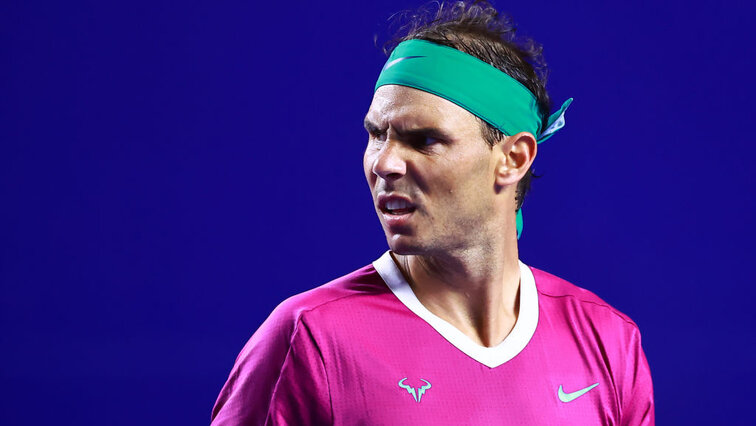Stay focused in the match: The backpack principle
Do you have the feeling that a heavy backpack is preventing you from your top performance in important games? Tennis insider Marco Kühn has a few suggestions for you.
by Marco Kühn
last edit:
Mar 09, 2022, 09:43 am

Struggling for oxygen, I asked my buddy: "Hey, what did you pack in the backpack? Did you throw bricks and gold bars in there for me?". We were hiking in Garmisch and the sweltering heat bothered us. He replied: "No, not bricks, but all kinds of provisions, three water bottles, snacks and of course - gold bars!".
This hike was emblematic of what numerous tennis players do in their championship and tournament games. They pack their mental backpack with all sorts of expectations, game ideas and goals. This is how people like to take on a whole list of things for a match:
- Make few mistakes
- Good odds on first serve
- Beat many winners
- Play aggressively
- Install network attacks
- ...and look good while doing it
This list forms the expectation of a backpack weighing almost 12 kg, which you strap on your back before a match. It's not that easy to show great tennis with a backpack like that on your back, is it?!
I would like to introduce you to a different approach in the following lines. One that doesn't sound as spectacular as the impressive list a little above. But you might be able to be more focused in the match with this different approach. Staying cooler when the big points come up. And to bring one or the other hard-fought victory home with us.
The backpack of champions
When we look at the game philosophy of the great champions, we are intrigued at first glance. They always seem to play perfectly when it counts. You make fewer mistakes if you are not allowed to make mistakes. The champions grab when you have to.
At second glance, we find that all champions only pack their mental backpack with the most important elements for their game. Rafa packs fighting spirit, high spin balls on opponent's backhand and a forehand whip in his backpack. The Djoker, as you can tell, needs even less food. He packs the "zero unforced error" tactic in his backpack. Roger packs ultra-aggressive baseline tennis with variable serves included.
Sure, all these champions can focus on the point. They are masters of improvisation. But if we analyze a little more deeply, then we find that the basis for being able to play in such a focused and concentrated way is a simply packed mental backpack. The game ideas of the champions are simple in their basic structure and anything but complicated.
How to pack your backpack
Even if you've never really thought about your gaming philosophy, your game has clearly defined strengths and weaknesses. You have your own tactics and strategies to win - as well as lose - the points. Scooping the ball in at 13 km/h is a tactic. Going for the winner right from the second shot in the rally is a tactic. The backhand slice, played short without exception, is a tactic.
As soon as you have found out what your personal tactics (or game philosophy) look like, you can start packing your backpack for your championship and tournament games. In mental training, there is an incredibly effective method for training in a targeted manner. This method is super simple: You ask the right questions and answer them honestly for yourself. In the next step we will go through an example and pack your backpack.
We assume that you play a constant forehand that you like to attack with in the right game situations. Your backhand wobbles a little. Especially when you get hit high four times in a row. Your first serve is a plank, but it comes too infrequently. Your second serve is safe - but harmless. Based on these skills we are now building two to three ideas that you can put in your backpack for your match so that you can show your kind of tennis in a concentrated and focused way.
Your backpack can look like this:
1) Use the forehand early in the rally
2) Good odds on first serve
Not more. With these two principles as a match plan, it is much more effective for you to make good decisions in the rallies. You won't be overwhelmed by thoughts of what you could or should play next and how. You have a clear plan, a map that will navigate you through your match.
In the next steps, in the match itself, your ideas could look like this:
1) After the serve, move a little into your own backhand corner to be able to play more forehand
2) Playing the backhand slower but with more length into the opponent's weaker side
These two ideas would be a logical consequence of the two things you have in your backpack.
Conclusion
What can you take away from this article? Think about what your game philosophy looks like in a match (not in practice, that's a big difference). Break off two or three large pieces from your thinking, put them in your backpack, and then expand them.
That's exactly what we did in our example from this article. If you do this little mental exercise with dedication, you will find many small aspects of your game that you can improve even more.
And, the bottom line for you: Don't take too many ideas and expectations into your championship and tournament games.
